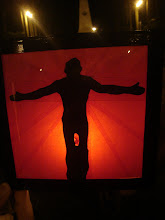
May 28, the country (with special mention to the province of Cavite) celebrated the National Flag Day. Purposely, statutes, like the National Flag Law, were enacted to serve the proper disposal of such a supposedly valued symbol, and once and for all, enshrine identity to the Philippine flag.
However, more than a century later, the evolutionary symbol of the country's independence is in the midst of serving a rather literal symbol than the value it originally repesents.
As a matter of refreshing our memories, each part of the Philippine flag has a specific meaning as follows: The blue field stands for common unity and the noble desires of the Filipino people. The white triangle with equal sides of the flag is symbolic of equality among men. The white field stands for purity. The sun stands for the gigantic strides that have been made by the Sons of the land on the road to progress and civilization. The eight rays of the sun in the triangle represent the first eight united provinces that revolted for independence - Batangas, Bulacan, Cavite, Laguna, Manila, Nueva Ecija, Pampanga and Tarlac. The three stars in the triangle stand for the three major geographical divisions of the country which are Luzon, Visayas and Mindanao. The red field symbolizes the eagerness of the Filipino people to shed blood in defense for their country.
Ironically, it seems that the ordinary Filipino rates this symbol as nothing but a piece of cloth, and only makes sense during this season. While the glorious symbol of the flag are usually gratified when Manny Pacquiao makes this sort of towel after making it through its bouts, or the Mt. Everest expedition, and as OFW puts it, a reminder of who they are.
At my age and as taught in school, i BELIEVE that the last of the honest-to-goodness displays of flag was more than a century ago in Cavite and probably during the subsequent and culminating resistance. Definitely, not during the bogus independence supposedly given by the United States in 1946, when the Philippine has to rise above the pole, while the US flag retreats, BUT, their grip over the country became a perpetual affair.
This culture of negligence against the flag entails something of a subculture-- of helplessness and neglect from government itself. Some basic rationale proposes that no amount of patriotism and nationalism could assimilate hunger and poverty. So goes with a kingdom or corrupted government, which cannot inspire a hundred soldiers and servants. When worst crimes are committed by the day, the flag is no less remains hopeful of utmost respect. In fact, I can't even remember of any single case of violation of the Flag Law.
But culture, like wisdom comes with age. I remain hopeful that someday in the near future, Filipinos would eventually take pride of treating the flag with so much aesthetics on it. This time, with a new flag, of a duly constituted government of, for, and by the people.
However, more than a century later, the evolutionary symbol of the country's independence is in the midst of serving a rather literal symbol than the value it originally repesents.
As a matter of refreshing our memories, each part of the Philippine flag has a specific meaning as follows: The blue field stands for common unity and the noble desires of the Filipino people. The white triangle with equal sides of the flag is symbolic of equality among men. The white field stands for purity. The sun stands for the gigantic strides that have been made by the Sons of the land on the road to progress and civilization. The eight rays of the sun in the triangle represent the first eight united provinces that revolted for independence - Batangas, Bulacan, Cavite, Laguna, Manila, Nueva Ecija, Pampanga and Tarlac. The three stars in the triangle stand for the three major geographical divisions of the country which are Luzon, Visayas and Mindanao. The red field symbolizes the eagerness of the Filipino people to shed blood in defense for their country.
Ironically, it seems that the ordinary Filipino rates this symbol as nothing but a piece of cloth, and only makes sense during this season. While the glorious symbol of the flag are usually gratified when Manny Pacquiao makes this sort of towel after making it through its bouts, or the Mt. Everest expedition, and as OFW puts it, a reminder of who they are.
At my age and as taught in school, i BELIEVE that the last of the honest-to-goodness displays of flag was more than a century ago in Cavite and probably during the subsequent and culminating resistance. Definitely, not during the bogus independence supposedly given by the United States in 1946, when the Philippine has to rise above the pole, while the US flag retreats, BUT, their grip over the country became a perpetual affair.
This culture of negligence against the flag entails something of a subculture-- of helplessness and neglect from government itself. Some basic rationale proposes that no amount of patriotism and nationalism could assimilate hunger and poverty. So goes with a kingdom or corrupted government, which cannot inspire a hundred soldiers and servants. When worst crimes are committed by the day, the flag is no less remains hopeful of utmost respect. In fact, I can't even remember of any single case of violation of the Flag Law.
But culture, like wisdom comes with age. I remain hopeful that someday in the near future, Filipinos would eventually take pride of treating the flag with so much aesthetics on it. This time, with a new flag, of a duly constituted government of, for, and by the people.


No comments:
Post a Comment